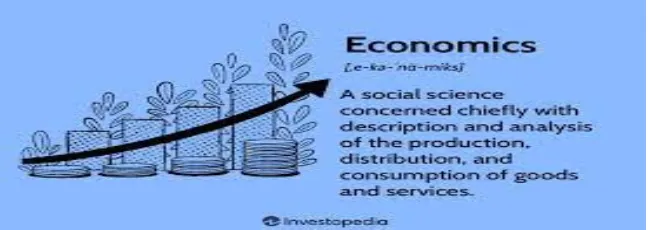
Economics
What are economics
Looking at Byland P.L’s what are economics chapter from “How to think about the economy”, we can see that economics is not just a thing but it is ever-changing and growing. Byland even says
“There are “laws” by which the economy works, and they are immutable”(Byland,2022,15).
Based on what we understand of laws they are to be understood and followed, this means that an economy needs the human touch in order to work. This chapter of Byland’s book offers a better understanding of how our relationship with our economy allows us to create value. Byland gives us an explanation of how human wants to lead to us coming up with a form of trade in order for us to try and better attain our wants. To me, this explanation makes a lot of sense because we normally are not given a way to understand what the economy is we only ever hear phrases like “in this economy”, or “that’s just the economy”. But for me, this is the first time I have heard the economy explained in a way that I agree with.
This chapter also goes into what Byland considers the problem with our economy, production. Byland writes that he believes that because of the way humans work there is never a constant demand for any one product. And I have to agree with him because after all everyone's needs are changing and our wants are most definitely changing. A lot of times it seems like people can not make up their minds about what they want. And because of this most producers can not set an exact number of what they should be producing.
Economic Theory
Byland’s chapter “Economic Theory” is all about how economics like other sciences is not just about what we can observe happening, but it is also about the theory that we use to better understand our economy.
“Economic theory allows us to understand how an economy works. It explains the workings of the economy as a whole so that we can understand the meaning, impact, origins, and evolution of economic phenomena.”(Byland,2022,21)
I really like this quote from Byland’s works, because it really shows that we should all be reaching to really understand what economics is. I think he makes a point to discuss the theory of economics because it will allow people to look at theoretical scenarios so that they can better understand how it would act. However, theory can only get you so far, if you are not using theoretical scenarios based on real situations then instead of learning you are simply grasping at straws rather than learning.
Another good analogy used by Byland in order to drive home the point that it is important to learn and study from things and people that are knowledgeable on the things that you are looking into, is when he brings up what bridge you would want to use, one made with steal or one made with steel. Any sane person would choose to cross the bridge of steal because, in every kind of science, steal is stronger than paper, this same principle can be used with economics. You would not want to take advice from someone who has never had any experience with the economy or on a fundamental level believes that the economy is based on something ridiculous such as the number of trees in an area.
Market
A process not a factory
This chapter is all about how our economy is not just about what happens in one factory but is reliant on what happens in the businesses leading up to the final product. The example used in this chapter is about a candy manufacturing plant.
“For example, a producer of candy usually does not produce the sugar, flavoring, or coloring that is in it.”(Byland,2022,42)
This is an excellent example because it does a wonderful job of explaining that in any product we consume, it takes thousands of people to make sure that it is made in completion. If we stick with Byland’s example of candy we have to look at everything that goes into making candy from the ingredient suppliers to the farmers who harvest the ingredients. You also have to take into account the companies who make the machinery, they have to get their parts and materials from other companies. I think this is a very good way to look at how the economy works because it can only work if all the cogs in the machine work together, so to speak.
Conclusion
In conclusion, Byland has done a wonderful job of explaining the inner workings of our economy. All the chapters that I read of Bylands book I just thought he made everything so much more clear in terms of trying to understand how we as people work with one another.
Works cited
How to think about the economy: A Primer paperback - amazon.com. (n.d.). Retrieved February 17, 2023, from https://www.amazon.com/How-Think-about-Economy-Primer/dp/1610167554